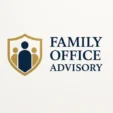Roles & Responsibilities in the Family Office #
Roles and responsibilities in a family office define the structure, accountability, and professional capabilities required to manage wealth, operations, governance, and long-term family objectives. A clear organizational model helps avoid overlaps, prevent conflicts, improve efficiency, and ensure that the office delivers consistent and transparent service to all family members.
Context & Importance #
Family offices vary widely—from lean administrative setups to sophisticated multi-disciplinary organizations. Regardless of size, clarity of roles is essential. Ambiguity can create misunderstandings, confidentiality risks, decision bottlenecks, and operational gaps. Roles and responsibilities serve as a blueprint for governance, recruitment, performance management, and succession planning within the family office.
Typical Roles in a Family Office #
- Chief Executive Officer (CEO) / Family Office Director
Provides overall leadership, strategic direction, and alignment with family goals. - Chief Investment Officer (CIO)
Oversees investment strategy, asset allocation, manager selection, and portfolio monitoring. - Chief Financial Officer (CFO)
Manages accounting, reporting, budgeting, financial controls, and liquidity planning. - Head of Operations
Coordinates daily operations, vendor management, systems, and processes. - Legal & Compliance Officer
Ensures regulatory compliance, manages legal structures, contracts, and governance documentation. - Estate & Trust Manager
Administers trusts, holding companies, reporting obligations, and succession structures. - Tax Advisor / Tax Manager
Manages tax planning, cross-border coordination, reporting, and compliance. - Philanthropy Officer
Coordinates foundations, grantmaking, impact assessment, and family engagement in giving. - Next-Gen & Education Officer
Supports leadership development, financial literacy programs, and generational transitions. - Lifestyle & Concierge Manager
Manages homes, travel, staff, events, and lifestyle administration. - Security & Risk Officer
Oversees physical, digital, and operational risk management. - Administrative Support Staff
Handle scheduling, documentation, communication, and day-to-day tasks.
Governance Roles for Family Members #
Family members often serve in governance positions rather than operational roles. These responsibilities focus on oversight, strategic alignment, and long-term continuity.
- Family Council Members: Represent family branches, participate in governance, and provide input on major decisions.
- Family Assembly Participants: Engage in information sharing, education, and collective discussions.
- Board Members (SFO or holding companies): Provide oversight for financial, strategic, and operational matters.
- Foundation Trustees: Govern philanthropic activities and ensure mission alignment.
- Next-Gen Delegates: Participate in committees or junior boards for the development of future leadership.
Role Clarity & Accountability #
A successful family office ensures each role has well-defined responsibilities, decision rights, and reporting lines. This avoids duplication and ensures accountability.
- Job descriptions: Clear documentation of responsibilities, competencies, and goals.
- Performance management: Annual reviews, KPIs, and development plans.
- Segregation of duties: Controls that prevent conflicts or fraud.
- Reporting structures: Defined hierarchies and approval workflows.
- Decision-rights matrix: Specifies who decides, who approves, and who is informed.
Implementation & Best Practices #
- Start with a governance design workshop: Align family values, goals, and expectations.
- Define operational vs governance roles: Distinguish family responsibilities from professional tasks.
- Recruit experienced professionals: Especially for investment, legal, and tax roles.
- Use organizational charts: Visualize reporting lines and responsibilities.
- Implement succession planning: Prepare for retirements, transitions, and key-person risk.
- Ensure documentation: Policies, procedures, charters, and manuals must be maintained.
- Conduct training and development: Support staff and family members in their roles.
- Review annually: Adjust roles as family needs evolve.
Common Challenges #
- Unclear role boundaries leading to duplicated efforts or conflicts.
- Family members taking operational roles without necessary skills.
- Insufficient controls or segregation of duties.
- Key-person dependency in small family offices.
- Governance roles not evolving with generational transition.
- Lack of performance monitoring or accountability.
See Also #
- Family Governance
- Family Constitution / Charter
- Next-Gen Education & Leadership Programs
- Family Communication Protocols
- Risk Management & Reporting




